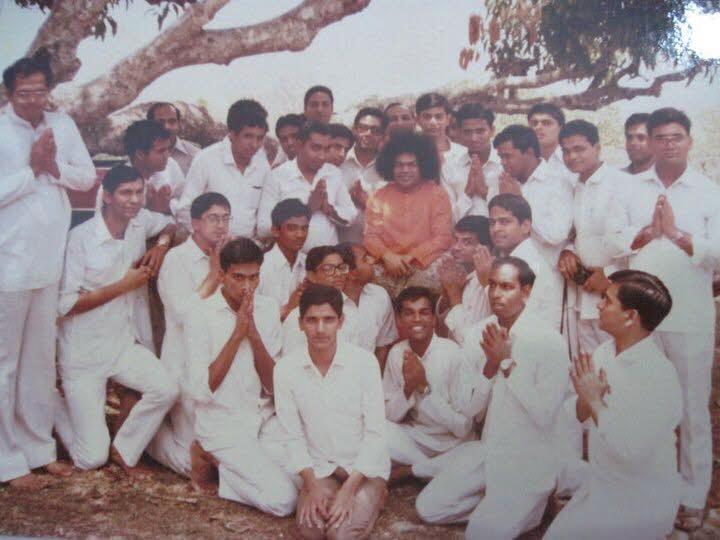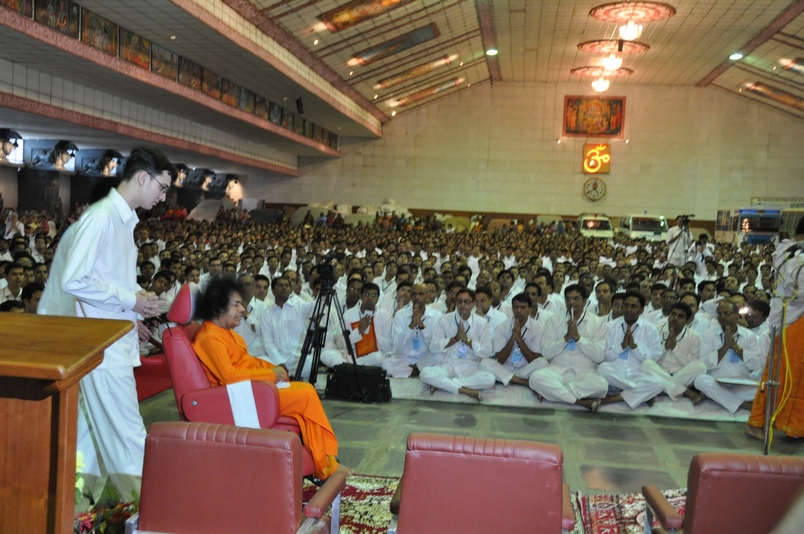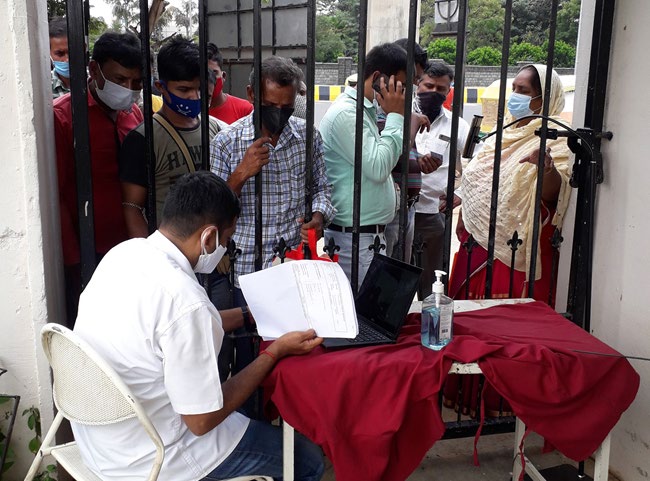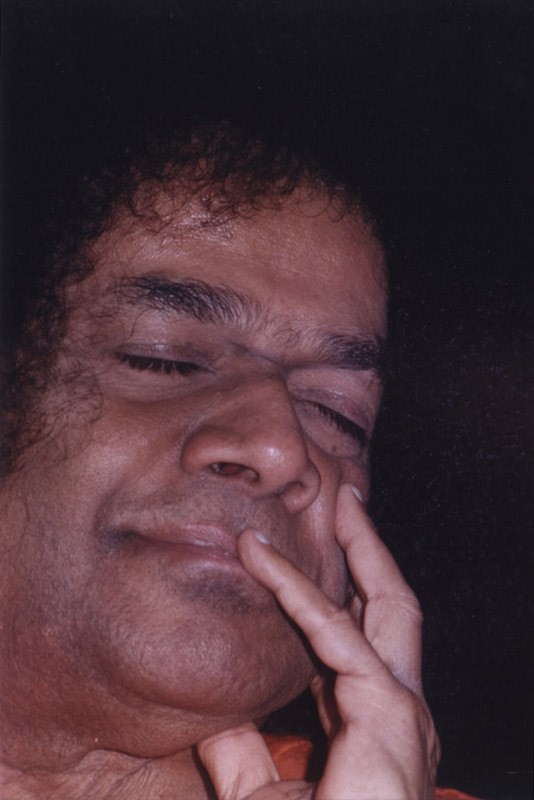The main purpose of the Dasara celebrations is the purifying of the inner faculties and the saturation of the mind with holy thoughts. Every item of the Dasara programme – the speeches, the music, the dramatic shows—all are intended for this very purpose. Each individual is the heir to the empire of liberation, Moksha Samrajya, but he feels himself poor and helpless. It is only by detachment, by renouncing sense pleasures that this empire can be won. – Bhagawan.
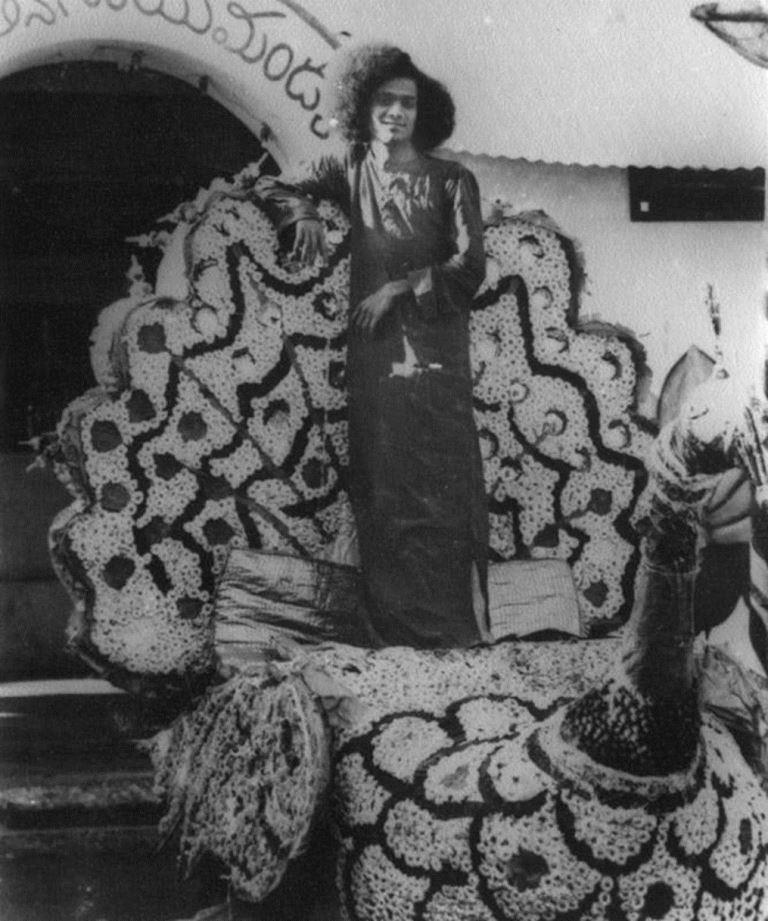
Dasara has been one of the most celebrated festivals in Prasanthi Nilayam even during the Patha Mandir days. One of the earliest accounts of Dasara celebrations by Smt. Vijaya Kumari from 1946 (in her book Anyatha Sharanam Nasti) tells us about Swami coming in beautifully adorned palanquins on all 10 days to the mandir, decorated beautifully in flowers, verily looking like the Devi herself. Over the years Swami added numerous elements to the Dasara celebrations, from the Veda Purusha Saptaha Jnana Yagnam, Kavi Sammilan, Music programs, the prestigious Vidhwan Mahasabha to His one of kind seva activity, the Grama Seva. All of these were added not just to increase the grandeur of the celebrations, but to collectively advance humanity on Bhagawan’s mission – the upliftment of man, the establishment of Sanathana Dharma and the bestowing of bliss.
Swami put together the entire concourse of what we call the Dasara celebrations to aid us all on our own paths in our journey to the Divine Lord. And in that pursuit, the Dasara celebrations essentially transformed into a confluence of the three yogas – Karma, Bhakti and Jnana.
- The Veda Purusha Saptaha Jnana Yagna as a demonstration of Jnana Yoga
- The Prasanthi Vidhwan Mahasabha where we hear spiritual talks by Scholars, Teachers, Students and Bhagawan Himself, as a demonstration of Bhakti Yoga
- Grama Seva as a demonstration of Karma Yoga
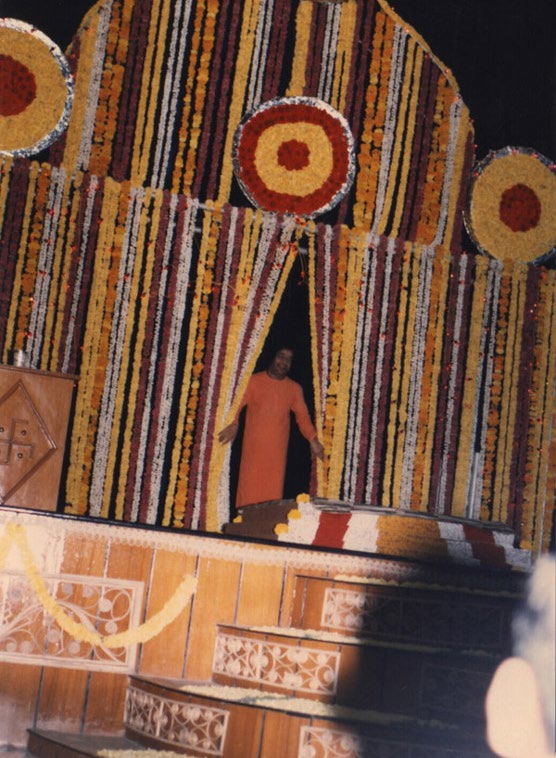
The Veda Purusha Saptaha Jnana Yagnam was first announced in the year 1962. It was an important step in Swami’s mission of Veda Poshana and the re-establishment of a Vedic culture. As fondly narrated by Sainath brother, who had the lovely privilege of attending to Swami at extremely close quarters – “As for the preparations for the Yagnam, Swami would go into details of everything. He relegated responsibility – but would watch what everyone was doing with an eagle eye. Everything – starting from where the Pandits and Rithwiks would be staying, their daily meals menu (strictly separate food was prepared for them without onions and garlic) – fruits available for them. He also knew that the main Rithwiks would not eat any food until the morning’s Yagnam was over. He would therefore ask for plenty of fluids (usually buttermilk!) to be provided for them. He was so considerate that He even noted some Rithwiks who had diabetes and hence, He would insist they have some light palaharam (tiffin item) before they come to the Yagna.” Even seen from a worldly point of view, Swami’s grasp of the minutest arrangements needed for the Yagnam was just jaw-droppingly inspiring.
Even as He was changing the very course of human history, Swami was taking His beloved boys along with Him. “In the early days, the Mantra pushpam was chanted by the Rithwiks”, says brother Sivakumar. “This is in the mid-1980s when I was still a student”, he continues, “We used to sit on the stage and chant Vedam, but it would be along with the Pandits as a chorus. One fine day Swami told the Pandits to stop and asked the students and a few staff to chant on the microphone. What I vividly remember from that day is the pride on His face when we finished chanting, to see His boys measuring up to the level of the Rithwiks was a matter of immense joy for Him. And this incident slowly evolved into students chanting Vedam on stage on a regular basis, alternating with the Rithwiks, which is how it is done today (Swasti form).’
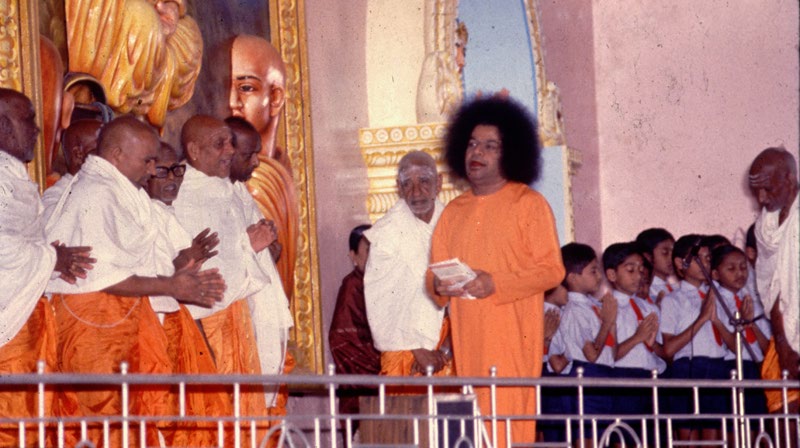
“It would be very interesting to hear the Primary School children join in the chanting. They would chant at a much higher pitch than the institute students or Pandits and the auditorium or Kulwant Hall would echo with their voices. And one could see Swami brimming with pride as this would happen, the glowing happiness of the Mother as Her children bring alive our Vedic past.”
Sivakumar brother continues, “Swami would give us some very wonderful opportunities during those sessions as well. In the early days, boys used to chant Vedam in the interview room. So much so that sometimes Swami even took interviews while the boys would remain there chanting! One of those days, Swami came into the interview room and asked us to follow Him into the Poornachandra Hall. For us, it was a great opportunity to chant Vedam along with the Pandits there. And then, to our extreme surprise, Swami asked us to follow him to His room upstairs!!! We all followed Him into His room and walked around chanting and staring into the room Swami called His Human Abode. For all of us present there, it was a once in a lifetime opportunity to see, enter and chant Vedam in the very room where Swami lived.”
While as the Chancellor, Swami would look after all the arrangements of the Yagnam, as the Divine Lord, He would use every opportunity to teach us the highest of the truths. The Yagnam was part of His Divine will to revive Vedic Dharma. As He Himself offered Poornahuti, while He was receiving all the offerings of the sacred fire, and accepting the offerings as the Divine Supreme Lord, Swami in His own subtle manner has been teaching Humanity that the source, the journey and the destination – it is all He! As He has taught us,” Brahmarpanam Brahma Havihi…”.
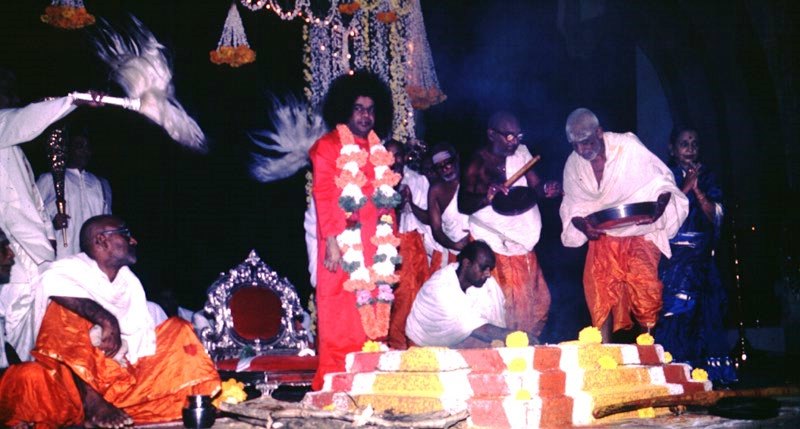
Brother Sudhindran narrates an incident in relation to this. “Once during the evening Pooja in Poornachandra Auditorium, the Head Priest was narrating how as per the scriptures, after receiving all the Yagna offerings, the Devas take it to the Yagna Purusha (the Supreme Cosmic Being) and offer it to Him. On the very next day following the Vijaya Dashami in Oct 1999, Bhagawan had called the Brindavan warden sir and me for an interview. In that interview, Bhagawan narrated that during the previous night, i.e., on the night of Vijaya Dashami, Lord Indra and all the Devas visited him in Poornachandra. Swami mentioned that they made a very big silver tray full of offerings to Bhagawan and sought his blessings. That’s when I correlated what the Head Priest had mentioned and realised the import of his words.”
It was indeed a great blessing conferred by Bhagawan to his students to participate in the Yagna in the direct presence of the Veda Purusha and the Yagna Purusha Himself!!
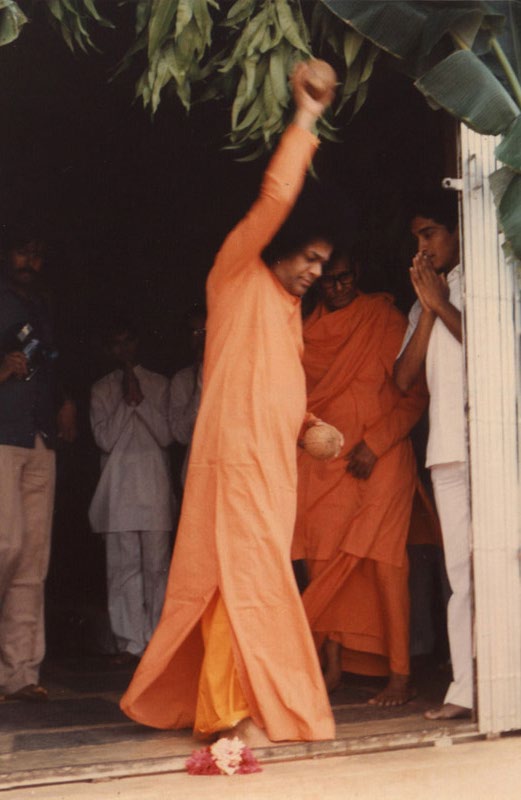
The Prasanthi Vidwan Mahasabha was first announced in 1963, “for the Moral and Spiritual Regeneration of mankind, with the Vedic Vidwans and Sastra scholars of Andhra as nucleus”. It was started with the idea of distributing the knowledge of the Vedas and Shastras to the masses by means of the personal learnings and experiences of eminent scholars, students and teachers and of course, His Nectarine discourse. And it is this Shravanam (listening to enlightening and ennobling matters) and Keerthanam (singing about the divine names and glories) that set us unto the path of Nava vidha Bhakti.
Brother Sainath remembers, “In 1986, Swami revived the practice of students giving talks in Swami’s presence before the Divine Discourse in the Prasanthi Vidwan Mahasabha. For this, the preparation began in the foyer of the University from June 1986 itself. Swami had directed the then Vice Chancellor Dr S N Saraf to make students speak in the foyer on the topics of Satya Dharma Shanti Prema and Ahimsa. After about 11 students had spoken, Swami suddenly called all 11 of us for an interview. The interview began at 4.00 PM and went on till 6.15 PM. In that Swami demonstrated to us everything about public speaking – about how we must prepare, how we must stand at the podium, how we must look at the audience, how we must choose our words, express our words – everything! It was such a blessing to be trained in the art of public speaking from the fountainhead of all knowledge.
During the training sessions, once Swami told us “Never speak about problems which everyone knows. Speak only when you think you can give some hope, happiness, and inspiration. Speak about things that are positive.”
Brother Amey, who has spoken numerous times as part of the Vidwan Mahasabha, also narrates his experience. “The institute followed very rigorous measures in selecting the students who would speak. It would be based on the foyer talks that would happen in the college and Swami would select the names of the students. Each student was going to speak amidst famous scholars, eminent teachers and Swami Himself! There was an immense amount of pressure on us. The speech had to be flawless, the right language, the right timing, the right flow. An insane amount of due diligence went into it in the background.”
“Another incident that comes to my mind is about how Swami would also coordinate subtle things in His own way. There was a brother whom Swami asked to speak. When Swami asked, ‘What will you speak?’, he said ‘Swami please speak through me’. Then the brother goes on stage and starts speaking. And suddenly during the speech, he doesn’t know what to say next. He has absolutely no idea on what to say next. Before the panic kicked in, he made a mental prayer to Swami. As if responding to it, Swami immediately said ‘Enough. You can stop the speech now’ and the brother with a huge sigh of relief walked down to his seat. In the nick of time Swami saved him from public embarrassment.”
The Prasanthi Vidwan Mahasabha was not just a narration of the experiences but also experiences in themselves, each strengthening the students’ faith in Swami and leading them on the path of Bhakti.
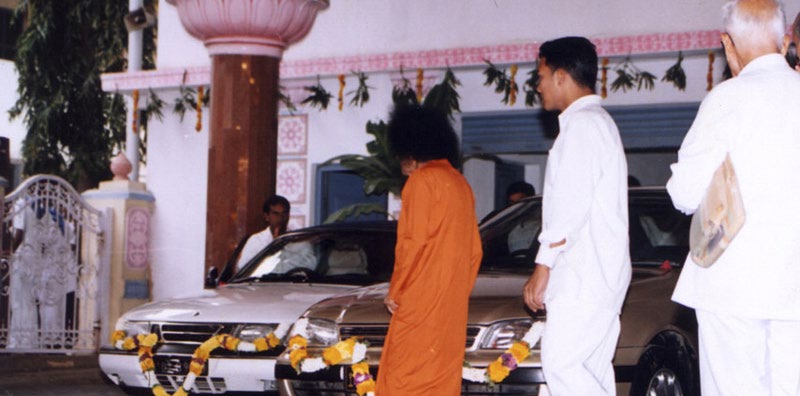
The Grama Seva was one of the largest Seva undertakings of Bhagawan. Since his childhood Bhagawan had always been the Uddharkarta of the downtrodden. From generously sharing food to the needy to conducting Narayana Seva every Dasara, he had literally taught us that “Service to mankind is service to God.” Swami would get very excited at the prospect of Seva. As N. Kasturi Garu writes in the 1961 Sanathana Sarathi, “It was Dasara at Puttaparthi, a few years ago, the fourth day, I believe. At about 9PM Baba sent word to a band of young men that they must assemble in the Hall for some urgent work, and within a few minutes, there were double the number, eagerly awaiting His orders. Everyone wondered what that could be! Well, Baba came and explained that the buntings and flags with which the Nilayam and the garden were decorated since the first day of Dasara had faded slightly and become dull in color and so they had to be replaced by fresh ones, to be prepared and fixed during the night! The work engaged us till the smaller hours of the night and Baba was with the party all the time, attending to every details. Someone dared asking Him the reason for the extra attention upon the 5th day of Dasara and the reply he got was this: “Don’t you know that tomorrow your Bandhus come for the feast?” and this we knew! For, the next day was the day the poor, the Daridra Narayana were coming to the Nilayam to receive Prasadam and Vastram from His Hands! But who could imagine that His Prema was so great, so deep, so all embracing as to celebrate the arrival of the poor by this ‘de novo’ decoration? When someone told Him that the feeding of thousands of people and the distribution of hundreds of saris and dhotis should be published in the papers, He turned towards him and said “What! Do you publish in papers the news that your friends and relatives came to your house?”! We have, every one of us, to learn the lesson of those flags.
Coming to the Grama Seva, Sainath brother, who had the privilege of being with Swami most of the time and saw the whole event materialize from the front row seat, said, “Swami had a long discussion the elders about the Grama Seva. He was very clear when He said, ‘I want my students and teachers to understand what real service is. They must experience the true joy of service. Tomorrow they will become leaders and must set an example by learning to serve with joy towards the people who they are responsible for. They must set an example which others will feel inspired to follow.’
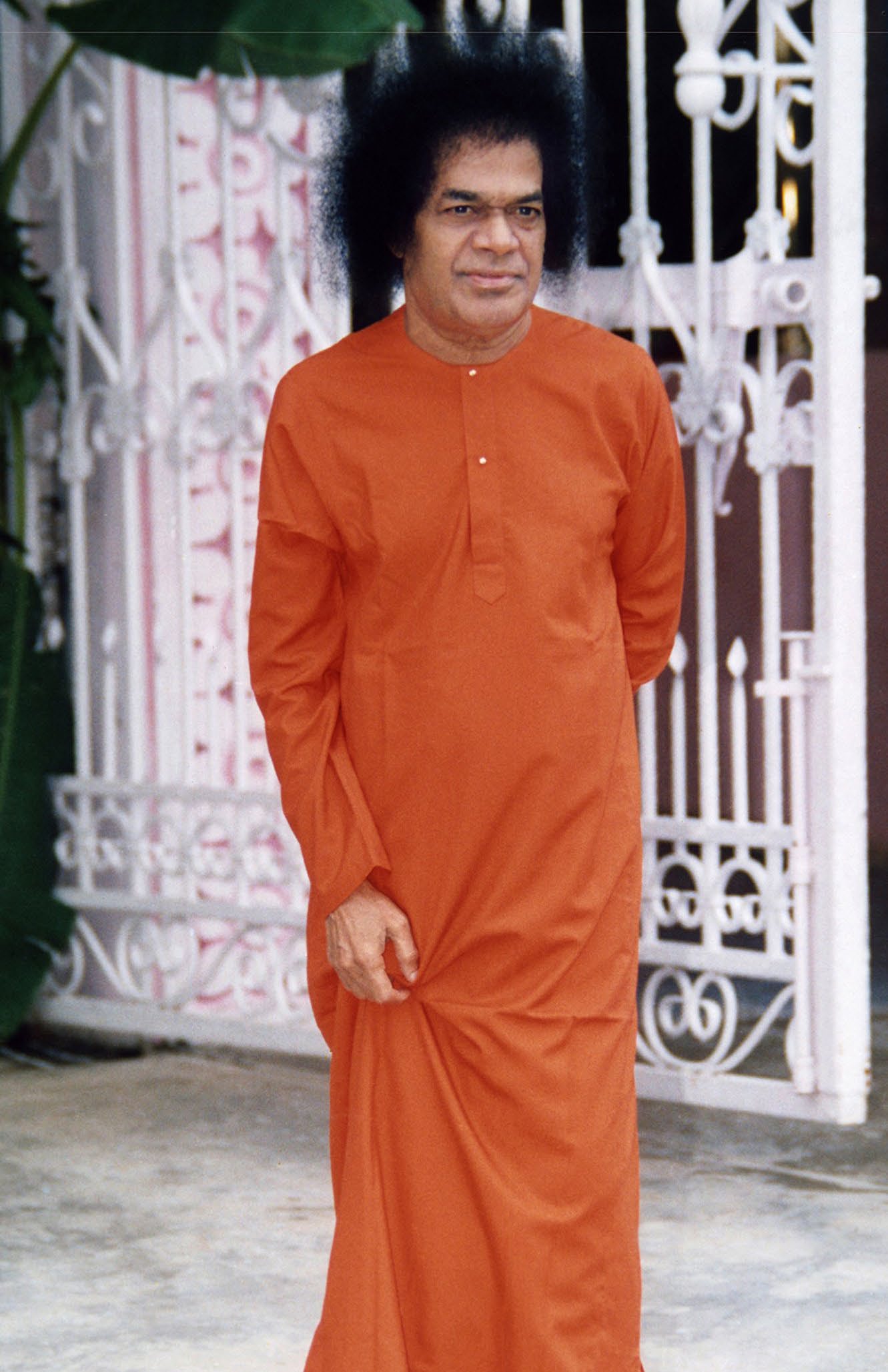
During the first day of Grama Seva, Swami caught me in Poornachandra and asked why I did not go when all other students and teachers were out in the field doing service. I was upset and hurt with the tone in which Swami told me this and thought that Swami did not want me in His presence. During the first day, we had a tractor breakdown and I offered to stay back along with another teacher and a couple of students to get the tractor repaired and then brought back. All the other teams proceeded to Parthi. It was later I heard the huge ruckus that was created in the mandir. Swami dispatched several people here and there to find out why I had not yet arrived. He Himself caught me when He returned to Poornachandra and asked where I had vanished when everyone else had come back. I explained to Him about the broken-down tractor. He then looked lovingly at me and said, “I was so worried when some of you did not return!” That was Swami. He has the entire universe to look after. And yet keeps His heart open for small individuals and His students. It was so funny that from the next day, I was asked by the Vice Chancellor and Registrar to go somewhere close by for seva and not venture too far away.”
“Swami would explain, ‘I send you all to do Grama Seva because you must experience this in the correct spirit. Never serve feeling that you are in a privileged position, and you are giving to others who are in a lower position. I want you all to see Swami in each one of the people you serve. That is the feeling I want each of you to experience now and in future.’
“Why do you think I insist on Saamohika bhajan and Saamohika seva? All our activities are focused on collective effort. As an individual, you will never face your shortcomings. You will do whatever you think is right. But is it actually expected as per dharma and neethi? These questions you can answer only when you face your shortfalls. And that will happen only when you work in a group. Whether it is seva or bhajan or just living – like in your hostels. That is why going as a group to undertake activities is very important. It teaches you unity, adjustment and understanding. These qualities are very important when you move into the world.”
Even as Swami was teaching us the highest truths, he was also paving the path for us to learn our personal lessons. One such incident is from Brother Amey. “When we would go for Grama Seva, we would meet people in villages who would be staying in small one-room houses and claim that 15 people are staying in that. Since as a research scholar I was responsible for ensuring correct distribution, I would go and investigate these houses and determine that they are doing this to get extra food and clothing. And most of the time I ended up arguing with the villagers for this. They would then follow me around, chasing me, pulling at my clothes, disturbing the distribution process. All these arguments led to a loss of my peace of mind, and I used to wonder why Swami is making me do this. The next year, I managed to “bunk’ Grama Seva in the name of Drama preparations. However, the year after that, I couldn’t do that again. Pallav sir who was my Grama Seva in-charge insisted on me coming. So, I chose to stay in the stock vehicle so that I don’t have to go to the village and again argue with the people. The stock vehicle would stay outside the village and cater to the various trucks with their food and clothes requirements. However, if we had any leftover food, we would stop on the way and distribute them.”
“One of those days, we had some extra food and we stopped at Mamilkunta Cross to distribute the excess food. As the distribution was going on, one particular man kept pulling at my clothes and asking to talk to me. I thought he was asking me for clothes, and I kept telling him “Dhoti ledu, dhoti ledu”. That was until he told me he just wanted to talk.
So, I got down from the vehicle and walked to the side with him. He told me that he is a beggar, he doesn’t have a house, no clothes, not even a village to call his own and he begs every single day for food. He was ashamed of what he was doing but he had no choice. And therefore, he would beg every day, except for these 10 days, 10 days when he knew Swami would send food for him. For these 10 days, he could live with his head held high because he did not have to beg, because he knew that God was looking after him.
Listening to this I was so shocked that I cried. And at that moment I understood the whole thing, I understood my role in Grama Seva. I was not cooking the food or spending any money on this. It was all being organized and done by Bhagawan. I was just a messenger! And of what? Not of the food and clothes. But of Swami’s love. And that was when it clicked for me, the whole point of Grama Seva was to give us an opportunity to distribute Swami’s love. That evening I wept and told Swami that from now onwards however agitated the other party is, I will always keep calm. And to my wonder, since that day I have never had a heated situation in Grama Seva. When I kept my cool and explained the whole thing to people, they understood and stopped arguing. All this while they were arguing because I was.’
What a subtle nudge for His Student by the Lord on his path of Karma Yoga.
These are but drops in the ocean. Thousands of people who have been a part of these celebrations for 50 years have all had experiences that have the distinct signature of Swami, guiding them, prodding them on in their individual journeys. As Swami has said – ‘The proper study of Mankind is Man’. Who is this human being? Only the one who has the unity of thought, word and deed is said to be a true Human being. Lakshmi, who is the embodiment of all prosperity, is represented by the heart. The spoken word represents Saraswathi. Kriyaa Shakthi (action) is represented by Durga. That is why it is said, a person who has the unity of thought, word and deed is a Mahatma or a Noble man. Therefore, for inspiring this unity of thought, word and deed, and to enable man to lead a life as a human, and to dispel ignorance, the observance of this festival of Devi Navaratri was begun.’

